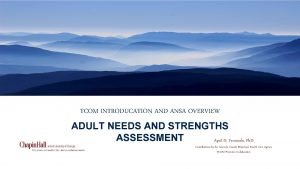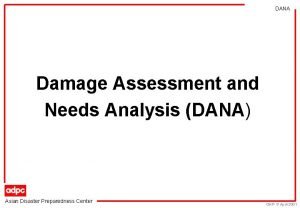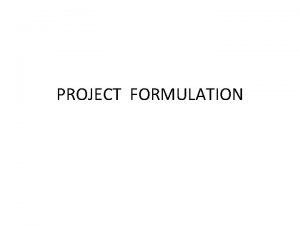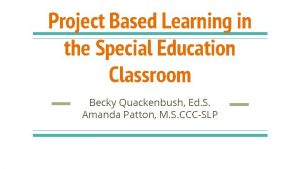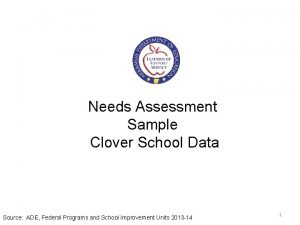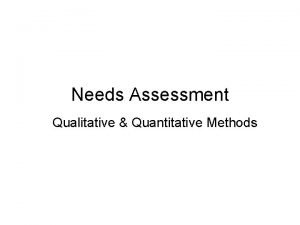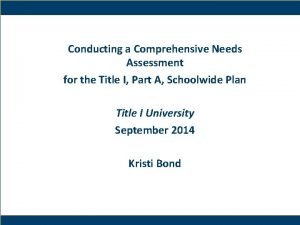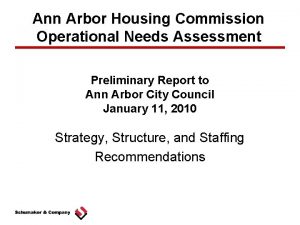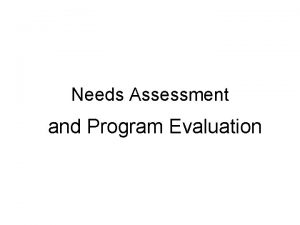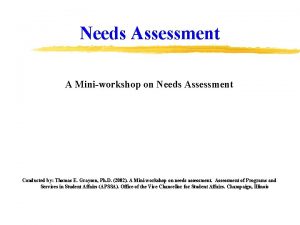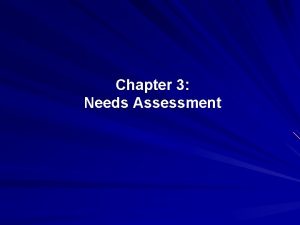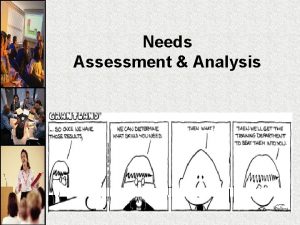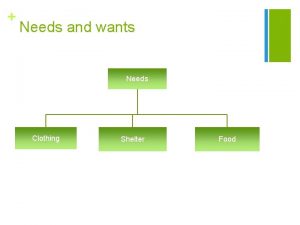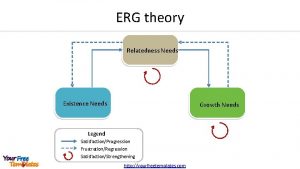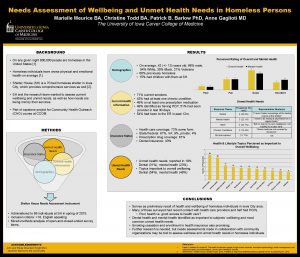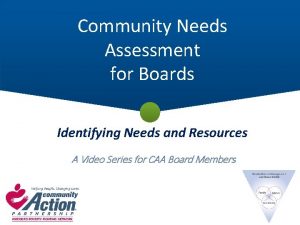NEEDS ASSESSMENT AND PROJECT DESIGN Needs assessment l













- Slides: 13

NEEDS ASSESSMENT AND PROJECT DESIGN

Needs assessment l WHY – – – Identifying specific needs Understanding present situations Knowing about the community/organization Bringing focus to the programme Exploring different perceptions

Why l To start project in a partnership – – Bottom up approach Mutual learning More effectiveness Knowing our limitations

Steps for a needs assessment l l l l Decide your stakeholders Collect general background of the stakeholders Build rapport with the stakeholders Decide needs assessment day with the stakeholders, at mutual convenience Prepare well for the needs assessment Be prepared for negative response !!! Have a plan for how you will analyze the results of the assessment

Steps for need assessment l Make a check list – – l Be focused Avoid direct questions (cultural sensibilities) Tools – – – Discussion in a meeting Drop box Use of pictorial tools Mapping Share findings with the community

PROJECT DESIGN l GENERAL OBJECTIVE l SPECIFIC OBJECTIVES l INTERVENTIONS (ACTIVITIES) l TIMELINE l RESOURCES AVAILABLE (human and finances) l RESOURCES NECESSARY (human and finances) l MONITORING AND EVALUATION

Relationship between vision, objective & activities VISION/BROAD AREA OVERALL OBJECTIVE SPECIFIC OBJECTIVE ACTIVITIES

Vision l Vision defines macro level areas which have been decided by the organization/group as per their policies/skills etc.

Objective l Helps to identify – – – Specify smaller part/parts of a vision statements More clarity about the what to be achieved Determines a range of desired outcomes which enable to achieve a vision

General objective l A Long Term Vision – – l What Do We Want to achieve ? Why Do We Want To Achieve ? Example: – To Create A Knowledge Based Learning Culture In Rawade School

Specific objective l Breaking down general objective into smaller objectives l Helps in designing implementation strategies and interventions – – Long term activities Short term activities l Helps in monitoring activities l EXAMPLE : – – – To Understand The Present Teaching Culture To Demonstrate The Different Ways Of Teaching(methodologies) To Enhance Skills Of School Teachers

Activities – TO UNDERSTAND THE PRESENT TEACHING CULTURE l l – Attending school classes and taking notes Discussion with school teachers TO DEMONSTRATE THE DIFFERENT WAYS OF TEACHING(METHODOLOGIES) l Designing teaching plans for each session Planning of each session – Specificity (focus) – Review /revisiting – – TO ENHANCE SKILLS OF SCHOOL TECAHERS l l Training for teachers Co facilitation with teachers

How to decide activities? l Relationship with your objective l Available resources – Time – Human – Money l How are we going to measure it? – Who – When – Where
 Primary needs and secondary needs
Primary needs and secondary needs Satisfaction
Satisfaction Primary needs and secondary needs
Primary needs and secondary needs Strategic gender needs and practical gender needs
Strategic gender needs and practical gender needs Present situation analysis
Present situation analysis Adult needs and strengths assessment
Adult needs and strengths assessment Damage assessment and needs analysis
Damage assessment and needs analysis Meaning of cost benefit analysis
Meaning of cost benefit analysis Project based learning for students with special needs
Project based learning for students with special needs Ade needs assessment
Ade needs assessment Quantitative needs assessment
Quantitative needs assessment Community needs assessment steps
Community needs assessment steps Challenges of needs assessment
Challenges of needs assessment Operational needs assessment
Operational needs assessment





